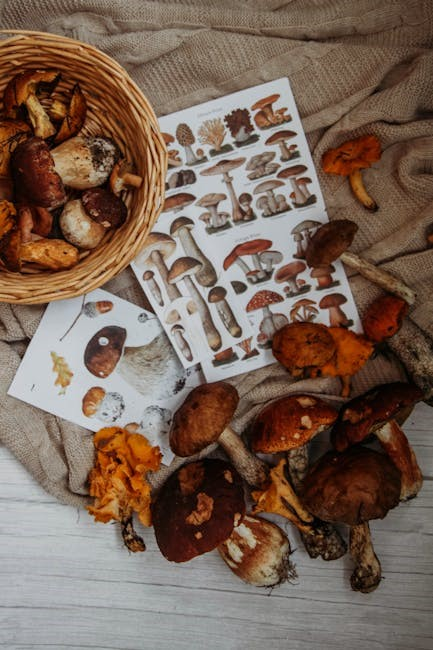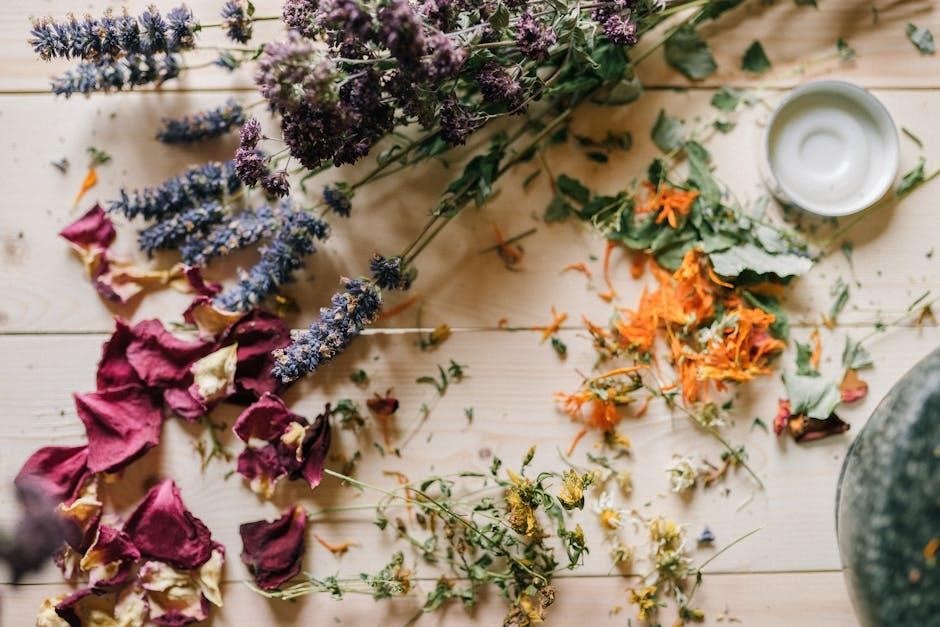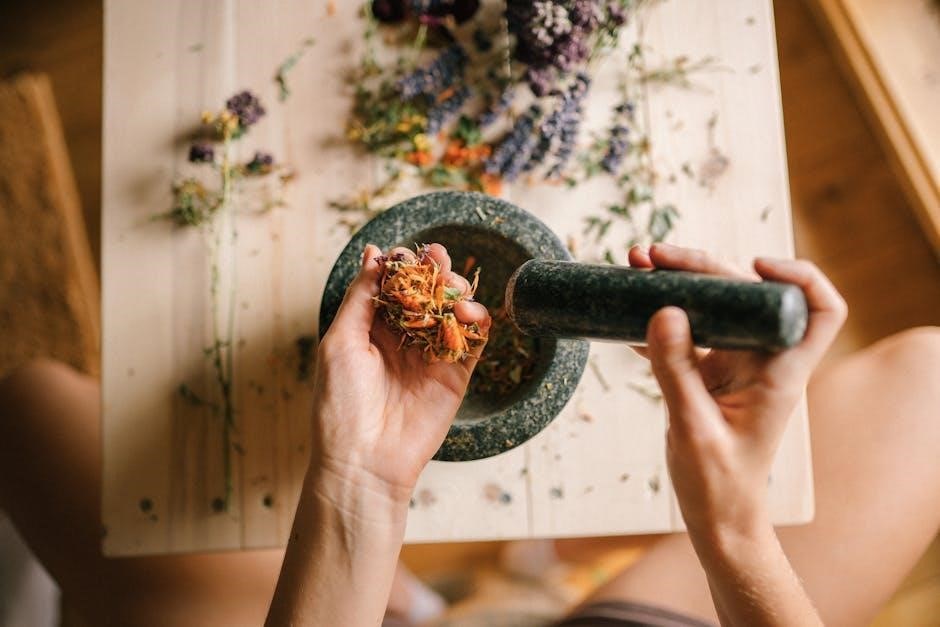Cataclysm Herbalism Leveling Guide: 1-525
Welcome, heroes of Azeroth! This comprehensive guide will provide you with the most efficient path to mastering Herbalism, from skill level 1 to the maximum of 525, within the Cataclysm Classic expansion. Prepare to explore Azeroth’s changed landscapes, gathering valuable herbs.

Cataclysm Herbalism offers a revitalized experience for aspiring and seasoned herbalists alike. With Deathwing’s destructive impact reshaping Azeroth, new herbs have sprouted across the landscape, offering unique properties and challenges for gatherers. This guide focuses on efficiently leveling your Herbalism skill from 1 to 525, providing optimal routes and strategies for each skill bracket.

The profession allows players to collect essential reagents for various crafts, including Alchemy and Inscription, making it a valuable asset for personal use or economic gain. This guide details where to find trainers, the best zones for farming, and tips for maximizing your gathering speed. The Lifeblood perk that gives you health regeneration keeps you alive longer while herbing.
Whether you are a new player just starting your herbalism journey or a veteran looking to optimize your leveling process, this guide provides the necessary information to navigate the Cataclysm herbalism landscape effectively. From the familiar terrains of Azeroth to the newly scarred zones, discover the secrets to mastering Herbalism in Cataclysm. This guide will ensure a smooth and profitable journey to skill level 525.
Benefits of Herbalism in Cataclysm
Herbalism in Cataclysm Classic offers a multitude of benefits, extending beyond simply gathering herbs. The primary advantage lies in providing essential reagents for Alchemy, allowing players to create potent potions, elixirs, and flasks. These consumables are crucial for raiding, PvP, and general gameplay, making Herbalism a valuable support profession. Alchemists will find a steady supply of materials to fuel their craft.
In addition to Alchemy, Herbalism also supports Inscription, providing key ingredients for creating glyphs. Glyphs enhance character abilities and are always in high demand. Leveling Herbalism unlocks the Lifeblood ability, granting a passive healing buff. This is especially useful for solo play or when surviving in dangerous zones.
Furthermore, Herbalism provides a reliable source of income. Herbs are consistently sought after on the auction house, allowing players to generate gold by selling their gathered materials. Whether you’re funding your epic mount or gearing up for raids, Herbalism is the perfect profession. The abundance of herbs in Cataclysm, coupled with optimized farming routes. These resources will provide a steady stream of income and essential crafting components.
Learning Herbalism: Trainers and Skills
Embarking on your Herbalism journey in Cataclysm Classic begins with locating a Herbalism trainer. You can find trainers in any major city of old Azeroth, such as Stormwind for the Alliance and Orgrimmar for the Horde. Unlike previous expansions, Cataclysm streamlines the training process; any trainer can teach you all ranks of Herbalism.
To start, simply speak to a guard in the city and ask for directions to the Herbalism trainer. Once located, learn the Apprentice Herbalism skill to begin your training. As you level your Herbalism skill by gathering herbs, return to the trainer to learn higher ranks. These ranks include Journeyman, Expert, Artisan, Master, Grand Master, and Illustrious Grand Master. Each rank unlocks the ability to gather more advanced herbs found in higher-level zones.
Cataclysm also introduces profession trainers in each starting zone, making it easier than ever to pick up Herbalism right from the beginning of your adventure. Remember that in Cataclysm, you no longer need to visit different trainers to learn new ranks of Herbalism. Every trainer will teach you all ranks. Leveling Herbalism is a straightforward process, but dedicated practice and efficient farming routes are key to reaching the maximum skill level.
Leveling 1-75: Starting Zones and Herbs
The initial phase of your Herbalism journey, levels 1 to 75, focuses on gathering herbs in the starting zones of Azeroth. These zones are ideal due to the abundance of low-level herbs and relatively low competition from other players. For Alliance players, Elwynn Forest and Teldrassil are excellent choices. Horde players can find ample herbs in Durotar and Mulgore.
The primary herb you’ll be gathering during this stage is Peacebloom, found abundantly in these starting zones. Other common herbs include Silverleaf and Earthroot, often located near trees, hills, and along roadsides. Explore every nook and cranny of these zones to maximize your gathering efficiency. Remember, players below level 20 should simply collect herbs in their current questing zone.
When searching for level 1-10 herbalism nodes, be aware of potential phasing issues that might affect herb spawns. If you’re having trouble finding herbs, try exploring different areas within the zone or revisiting locations later. As you reach Herbalism skill level 50, you’ll be able to gather Briarthorn, which can be found in slightly higher-level areas within the starting zones or in adjacent zones. Continue gathering these herbs until you reach skill level 75, preparing you for the next phase.
Leveling 75-150: Optimal Zones

Once you’ve reached Herbalism skill level 75, it’s time to move on to more lucrative zones to continue your leveling journey up to 150. For Alliance players, Westfall and Loch Modan offer a good supply of Mageroyal and Briarthorn. Horde players will find similar herbs in the Barrens and Silverpine Forest. These zones provide a higher density of herbs compared to the starting areas, allowing for faster leveling.
As you progress, keep an eye out for Bruiseweed and Liferoot, which become available at higher skill levels. Liferoot can often be found near water sources, such as rivers and lakes. Stranglekelp is another valuable herb to gather during this phase, though it requires swimming and can be found along the coastlines of these zones.
Hillsbrad Foothills is another option that offers a diverse range of herbs, including Bruiseweed, Mageroyal, Briarthorn, Grave Moss, Liferoot, and Stranglekelp. Remember to explore the areas around Sludgeguard Tower for Fadeleaf. Be mindful of the higher level mobs in these zones, especially if you are a lower level character. Continuing to gather these herbs until you reach skill level 150 will set you up for the next stage of your Herbalism adventure.
Leveling 150-210: Efficient Routes
At Herbalism skill level 150, you’ll want to find zones with a high concentration of herbs appropriate for your skill level to continue leveling efficiently. One excellent choice is Arathi Highlands. This zone offers a good mix of herbs like Liferoot and Fadeleaf. Follow the main road, deviating into the surrounding areas to gather herbs.
Another great option is the Hinterlands. The river running through the zone is a prime location for Liferoot. Higher up in the mountainous regions, you’ll find more Fadeleaf. Be cautious of the wildlife, as some areas can be densely populated with aggressive creatures.
For those preferring a more linear route, consider Desolace. This zone offers a relatively straightforward path with decent herb spawns. However, be aware that Desolace can be less densely populated with herbs compared to Arathi Highlands or the Hinterlands. Experiment with these zones and routes to find what works best for your playstyle and server conditions. The key is to find areas where you can consistently gather herbs without too much downtime or competition from other players. Remember to train your Herbalism skill at a trainer when you reach the appropriate level to continue progressing.
Leveling 210-300: Best Herb Locations
Once you hit Herbalism level 210, it’s time to venture into zones that offer herbs suited for this skill range. Feralas is a prime location, rich in Dreamfoil and Gromsblood. A circular route around the zone, focusing on areas near the coast and around Dire Maul, will yield a good amount of these herbs. Be mindful of the higher level mobs in the Dire Maul vicinity.

Another excellent choice is the Un’Goro Crater. This zone has a unique ecosystem and a variety of herbs, including Sungrass and Blindweed. The central area of the crater tends to have a higher concentration of herbs.
Consider also visiting the Plaguelands. Western Plaguelands offers Plaguebloom and Dreamfoil, while Eastern Plaguelands has Sungrass and Dreamfoil. Be prepared for the challenging environment and the presence of undead creatures.
Lastly, if you prefer a more relaxed approach, try Azshara. The coastal regions and the ruins scattered throughout the zone offer decent spawns of Dreamfoil and Gromsblood. Remember to train your Herbalism skill when you hit level 225 to continue gathering these herbs effectively.
Leveling 300-350: Outland Herb Farming
Upon reaching Herbalism skill level 300, the Dark Portal awaits, leading you to the resource-rich lands of Outland. Hellfire Peninsula is the initial zone, teeming with Felweed and Ragveil. Focus on areas around the pathways and the interior regions, keeping an eye out for these valuable herbs. Watch out for aggressive demons!
Zangarmarsh provides a diverse environment with herbs like Dreaming Glory, Marsh Stalker Weed, and the rarer Nightmare Vine. Explore the mushroom platforms and the watery areas, as these are prime locations for herb spawns. Be wary of the sporebats.
Terokkar Forest is another solid choice, offering Dreaming Glory and Terocone. The wooded areas and the outskirts of Shattrath City are good places to start your search. Keep an eye out for Arakkoa.
Nagrand is also a good location, providing a variety of herbs, including Golden Sansam and Felweed. Circle the edges of the floating islands and explore the grassy plains.
Remember to train your Herbalism skill at a trainer in Shattrath City or any major city to continue gathering these herbs effectively; Keep an eye out for mining nodes too!
Leveling 350-425: Northrend Herb Farming
With your Herbalism skill at 350, it’s time to brave the icy landscapes of Northrend! Tundra is an excellent starting zone, abundant with Goldclover and Tiger Lily. Fly along the rivers and coastlines, paying close attention to the open fields. Be prepared for the harsh climate and the occasional angry mammoth.
Grizzly Hills offers a mix of herbs, including Tiger Lily and Goldclover. Focus your efforts around the rivers and wooded areas. The zone has a lot of Tiger Lilies, which is very useful.
Sholazar Basin is another fantastic location, teeming with Adder’s Tongue. You will also be able to find some Goldclover and Tiger Lily here. Explore the basin thoroughly, keeping an eye out for herb spawns near the water sources and along the edges of the zone.
For those seeking a more challenging environment, try exploring the Storm Peaks. This zone contains Lichbloom and Ice Thorn. The mountainous terrain can make navigation difficult, but the rewards are worth the effort. Be careful around the giants.
Remember to learn the Grand Master Herbalism skill from a trainer in Dalaran or a major city to maximize your harvesting efficiency in Northrend.
Congratulations, you’ve reached the Cataclysm zones! This is where the real fun begins, and you’ll need to adapt to the new landscapes and flora. Your initial goal is to reach level 450, which will allow you to gather the higher-level herbs found in later zones. The first zone you’ll encounter is likely to be Mount Hyjal.
Mount Hyjal is an excellent starting point for Herbalists in Cataclysm. Here, you will primarily find Cinderbloom and Stormvine, which are essential for leveling your skill. These herbs are often found near lava flows and around the Regrowth.
Before venturing into Mount Hyjal, ensure you’ve visited a Herbalism trainer in a major city to learn the Illustrious Grand Master Herbalism skill. This will allow you to continue your progression beyond level 425.
As you explore Mount Hyjal, keep an eye out for Azshara’s Veil as well, which becomes more common as you approach skill level 450. Remember to be cautious, as the zone is filled with hostile creatures and other players competing for the same resources. With patience and persistence, you’ll quickly gain the necessary skill to move on to the next zone.
Leveling 450-500: Mount Hyjal Herb Farming
Mount Hyjal is your primary focus for leveling Herbalism from 450 to 500. This zone offers a consistent supply of Cinderbloom, Stormvine, and Azshara’s Veil, making it an ideal location to hone your gathering skills. To maximize your efficiency, it is crucial to understand the optimal farming routes and herb spawn locations within the zone.
A popular route involves circling the Regrowth, where Cinderbloom and Stormvine are abundant. Also, explore the areas surrounding the Molten Front daily quest hubs, as these locations often contain clusters of herbs. Remember to keep an eye out for Azshara’s Veil near bodies of water and along the edges of the zone.
While farming in Mount Hyjal, be aware of potential competition from other players. Consider switching to less populated shards or exploring during off-peak hours to reduce the likelihood of encountering rivals. Additionally, utilize tracking skills and gathering enhancements to further increase your efficiency. With a well-planned route and a bit of patience, you’ll reach skill level 500 in no time.
Leveling 500-525: Uldum and Twilight Highlands
Once you reach Herbalism skill level 500, it’s time to move on to Uldum and the Twilight Highlands to gain those final, crucial skill points up to 525. Both zones offer unique herbs that will help you reach your goal. Uldum is known for its Heartblossom, while the Twilight Highlands boasts Twilight Jasmine.
In Uldum, focus your farming efforts around the Vir’naal River and the Lost City of the Tol’vir. Heartblossom tends to grow near water sources, so keep your eyes peeled along the riverbanks and around the city’s waterways. Be cautious of the mobs in the area, as some can be quite challenging.
For Twilight Highlands, explore the areas surrounding the Dragonmaw Port and the Thundermar. Twilight Jasmine is often found in elevated areas and near rocky terrain. The zone can be dangerous due to the presence of aggressive creatures and faction conflicts, so be prepared for potential combat. Keep an eye out for other players competing for herbs, and consider farming during off-peak hours to minimize competition. With dedication and a bit of luck, you’ll soon master Cataclysm Herbalism.
Tips for Efficient Herbalism Leveling
To maximize your Herbalism leveling speed in Cataclysm, consider these essential tips. Firstly, always have a gathering speed enchant on your gloves, such as “Gathering” or a similar enchant, to significantly reduce the time it takes to pick herbs. This small investment will save you a considerable amount of time in the long run.
Secondly, utilize tracking abilities effectively. Ensure “Track Herbs” is active on your minimap to easily locate nearby nodes. Adjust your minimap settings to increase the tracking range, making it easier to spot herbs from a distance. Furthermore, consider using addons that enhance herb tracking, such as Gatherer or similar tools, which can display herb locations on your map and remember previously gathered nodes.
Thirdly, choose less populated zones and times. Farming during off-peak hours or in less popular zones can significantly reduce competition for herb nodes. Finally, consider pairing Herbalism with Alchemy. This combination allows you to use the herbs you gather to create potions and elixirs, providing additional experience and potential profit. Efficient route planning and a focus on high-density herb areas will also greatly improve your leveling speed.

